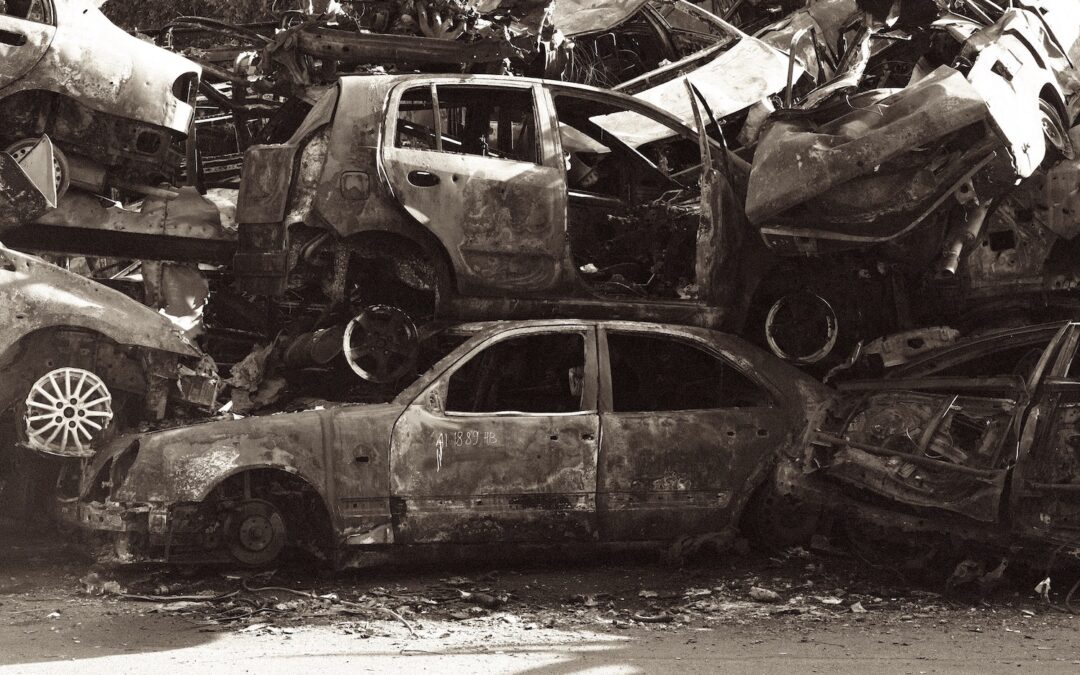People usually think of burnout as something that happens to them due to external circumstances, rather than something they actively create. Yet, it is not at all obvious that we can accept this at face value, particularly in our advanced, modern societies where working conditions are rarely Dickensian — difficult, dirty and dangerous. Still, we do find jobs today that are so self-evidently challenging that burnout seems inevitable. On the other hand, we also find burnout in rather low-key and comfortable jobs. This necessarily raises the question of different types of burnout.
While the final impact on the individual may be similar — ‘burning out’ — this may come about in very different work environments, due to very different causes. And, understanding causes is essential, because without the cause, you can’t find the cure.
What is burnout, anyway?
Burnout happens when you are so physically, emotionally, and/or psychologically exhausted that you feel unable to continue in your role. Tiredness, low energy, anxiety, sadness, loss of confidence and depressive feelings are commonly associated with burnout. People who suffer from burnout also tend to report feeling relentless pressure. Yet, what we often miss at this point is a deeper exploration of where exactly this pressure comes from. Uncovering the source of this pressure is what leads us to different types of burnout.
Two types of burnout
If physical, emotional, or psychological exhaustion is the end result, the question is: what is causing it? While the obvious answer is “well, it’s the bloody job!”, this implicitly makes an assumption. The assumption that burnout cannot be self-created by the individual, in an otherwise perfectly comfortable role. Challenging this implicit assumption opens the door to two very different types of burnout:
- From the outside (pressures of the role)
- From the inside (self-created, regardless of the specific role)
Acknowledging that they are not mutually exclusive, we can use the two types of burnout as a model for making sense of what is going on in the modern workplace. And, the picture that emerges is one where the type of burnout is closely linked to the type of job.
Blue-collar and white-collar burnout
I am using the categories of blue-collar and white-collar because they are well known. What’s more, the two types of burnout map quite closely to these categories, with some notable exceptions.
Type 1 — pressure from outside related to difficult working conditions — tends to be more commonly found in blue-collar jobs that are manual and non-administrative. These include labourers, cleaners, bus drivers, violent crimes detectives , but also the caring professions including nurses, doctors and social workers. Being a doctor or surgeon can be thought of as white-collar, due to education, pay and social status. However, the core work is non-clerical and very manual that is why I classify them as blue-collar.
Type 2 — self-created pressure from inside — is more commonly found in white-collar jobs. These are jobs held by the managerial class that tend to involve computer-based, office work. Much of the pressure in these, largely comfortable, roles is often self-created — usually coming from a relentless inner drive for ‘achievement’. Achievement that pins the person’s self-worth to climbing some bureaucratic career ladder. The burnout this creates may be as damaging to the person as that in any blue-collar role. However, it’s a fundamentally different road to burnout. It is much less about difficult external working conditions, and much more about the interior condition of your mind.
Psychological exhaustion
Blue-collar burnout is more likely to be driven by actual physical and emotional overwork, very directly linked to the job. Think of the exhausted nurse or rubbish collector. White-collar burnout, on the other hand, is much more likely to be psychological— linked to careerism and relentless achieving. The peculiar feature of white-collar burnout is that it can happen in physically and emotionally undemanding roles.
The psychological (and ultimately existential) exhaustion in white-collar burnout often comes from the need to prove one’s worth by occupying a certain kind of career position, in a certain kind of organisation. Unlike blue-collar burnout, such exhaustion is not due to backbreaking construction work, or night shifts in an understaffed hospital. Rather, it’s the exhaustion that comes from trying (and perhaps failing) to attain career success one believes one should have. It’s the exhaustion of desperately striving to measure-up to some arbitrary career goal.
It’s almost as if lacking the hardships of blue-collar employment, white-collar roles lend themselves to self-created struggles centred around career achievement. One reason this is less likely to happen in blue-collar roles is because society considers these jobs to be low status (wrongly, in my view) by default. So, blue-collar workers don’t need to be under any illusions. They either enjoy the work, or just need to make a living. Very simple, very practical.
Of course, white-collar careerism is entirely avoidable. You can choose to stop striving. In fact, I view the recent phenomenon of ‘quiet quitting’ as an encouraging movement reflecting this. White-collar employees are increasingly choosing to quit achievement, while quietly continuing to make a living in an expensive world. Eminently sensible, if you ask me, and reminiscent of practical, blue-collar attitudes!
Overlap in the types of burnout
We said above that the two types of burnout are not mutually exclusive — overlap is indeed inevitable. The two types of burnout are a “more-likely/less-likely” model for making sense of burnout, NOT an “either/or” model. Reality is rarely black and white and we see examples of blue-collar pressures in white-collar jobs and vice versa.
Blue-collar types of burnout in white collar jobs
Notable in this regard are those white-collar roles that involve relentless emotional pressure. For example, think of corporate lawyers or junior investment bankers working insane hours in cutthroat environments. Beyond the sheer volume of work, the unforgiving, dog-eat-dog culture is one of external pressure that is very much Type 1. What’s very toxic is that beyond the pressures of the job, there’s often huge self-created pressure to achieve (Type 2). It’s almost if someone took all the over-achievers from university (yes, they all went to university) and put them in one place!
White-collar types of burnout in blue-collar jobs
This tends to happen along a sort of continuum, where the closer to white-collar work the job is, the more career climbing creeps in. Social workers and nurses are a good example of this. The entry-level and early-career work typically involves very hands-on, patient contact that is very much blue-collar. However, as soon as practitioners enter management, the core work becomes much more administrative and closer to traditional white-collar work. In fact, I personally know people who have chosen to remain as practitioners, without moving into management, precisely to avoid all the nonsense that comes with bureaucratic managerial positions. And, that brings us to the bane of modernity.
The curse of sterile bureaucracies
The most striking feature of the large, modern corporation is the sterile, bureaucratic nature of the work. Layers of management, rigid rules, slow decision making, and of course typically incompetent decision makers. Working in such an organisation necessarily involves significant external pressure. However, this is not Type 1 pressure that comes from dirty or dangerous work. Rather, it is peculiarly psychological — a strange, sterile entrapment — and it’s most common amongst the white-collar, managerial class. Such pressure is largely driven by scale — huge organisational size and the its complexities.
Of course, blue-collar workers aren’t completely immune from this kind of pain either. They might be employed by, or otherwise have to engage with, sterile bureaucracies. So, these bureaucratic pressures will inevitably bleed into the blue-collar work they touch — albeit to a lesser degree than white-collar workers inside big corporations.
A note on bad bosses
While mediocre (generally benign) bosses are the norm in large corporations, bad bosses are another ball game altogether. Why? Because bad bosses can drive employees to burnout by creating a toxic work environment, in otherwise comfortable jobs.
A bad boss can create burnout anywhere and for anyone, whether blue-collar or white-collar. They are pain generators. And, it’s useful to see that, for it may be a less difficult problem to solve than, say being employed in a structurally under-resourced sector with inescapable Type-1 pressure. If the toxicity of your boss is far above the norm, changing jobs may solve it. You are most likely to encounter the average, mediocre boss in the next company by virtue of reversion to the mean!
Knowing which of the two types of burnout is at play
It’s important to recognise that self-selection is going on in employment. Some roles, particularly white-collar jobs, are more likely to attract overachieving types. But, this means that such jobs have features that cause the attraction. And, these same features will also influence the more likely type of burnout. So, the type of role can help you diagnose and further investigate which of the two types of burnout is at play. And, figuring out the type of burnout is crucial for avoiding it!
For, it allows you to recognise the unrecognised. It allows you to ask to what extent you are stuck in a sterile bureaucracy, or if your self-worth is caught-up in bogus ideas of career achievement. If there is one point I want to draw out in this essay, it’s that the achievement-obsessed mind can easily create burnout even in a benign environment, as it desperately jumps through hoops in search of validation. Self-created pressure to achieve can be as destructive, if not more destructive, than external pressures of the job.
Self-created pressure can hide from you
Asking to what extent these pressures are at play is crucial to liberating yourself. And, it matters less if you are an over-achiever attracted to such a role. What matters is noticing how you relate to your role and its implications. What matters is looking into yourself to figure out what pressures —external and/or self-created — are at play. Finding the courage to really be honest with yourself is the wellspring of clarity. And, real clarity is the path to empowering yourself with greater choice.
The problem with self-created pressure is that it can so easily hide from us. Often, until we reach a point of exhaustion that forces us to confront it. In a sense, burnout is like an emergency warning mechanism where your mind and body say “enough!” Luckily, we don’t have to wait for burnout to come knocking, we can pay attention to the signs much before.
A third kind of burnout?
In his remarkable book, Bullsh*t Jobs, the late David Graeber identified a class of white-collar job “that is so completely pointless, unnecessary, or pernicious that even the employee cannot justify its existence even though, as part of the conditions of employment, they feel obliged to pretend this is not the case”. He called these Bullsh*t Jobs and suggested that they are widespread in modern economies.
Of course, not everyone has a problem holding down a bullsh*t job. Some are quite content to pay the bills, doing something mundane, even if it lacks real meaning for them. Certain people find meaning in life outside work. While this may be quite alright for some, it may not be alright for you. If you object to such work in your heart, continuing is most likely going to burn you out eventually. Because you are using all your emotional energy to endure meaninglessness, with gritted teeth, on a daily basis!
We could classify this as a third type of burnout to do with ‘lack of purpose’. Equally, we could easily say that it is Type 1 — caused by external pressure in the role. Only, this isn’t ‘pressure’ in the usual sense, but the pain of doing work that you find completely meaningless. This is almost certainly a recipe for burnout, and that is why I have argued for the importance of finding work that is at least neutral — i.e. avoiding what you find detestable. This is the path of finding your anti-calling.
The most sinister kind of white-collar burnout
If you thought things couldn’t get any worse in the white-collar world, they most certainly can. Perhaps, the most sinister, existential kind of white-collar burnout, comes not from work that you find entirely meaningless, but from chasing achievement doing such work. Being empty of any purpose, some try to find it in the climbing of some career ladder. They know in their hearts that the work is meaningless, but still crave the validation of success, and thus strive on in a hollow pursuit. Nothing but eventual burnout can come out of this. Unless you are one of those Machiavellian types that revels in games of one-upmanship, without actually contributing anything of value.
Lack of genuine connection to work is far too common in modern workplaces. What makes this situation even more dangerous is the typically hidden belief that you must still prove your worth through career success. Even if that means doing something that you find entirely meaningless! This is a sinister kind of pursuit that can have a deep existential impact on your soul. Once again, you may not be fully conscious of the fact that you are engaging in this way! The mind is superb at playing hide and seek. This is why taking the time to examine how you relate to work and life matters.
It’s interesting that this kind of sinister burnout is rare in blue-collar roles. The work may be harsh, where workers are paid and treated badly, but that does not automatically mean these workers find what they do to be meaningless. Even very poorly paid janitors and cleaners recognise that their work has real social value. They may be sh*t jobs, but they are not bullsh*t!
Final words
This essay has sought to tackle the mistaken idea that workplace burnout happens only because of external pressures, whether due to structurally difficult working conditions, or toxic bosses. Self-created burnout due to relentless achieving is far more common in the modern workplace than many realise, particularly in white-collar roles that are otherwise benign. White-collar roles are also more likely to produce a sinister brand of burnout that involves careerism, while doing work one finds entirely meaningless.
This essay is also an invitation to more closely investigate your reality — what pressures might be at play for you, both from within and without. Avoiding burnout starts with noticing what-is. By more clearly understanding the different pressures you face, and your part in creating them, you empower yourself with greater choice.
_____________________________________________________________________________________________





Recent Comments